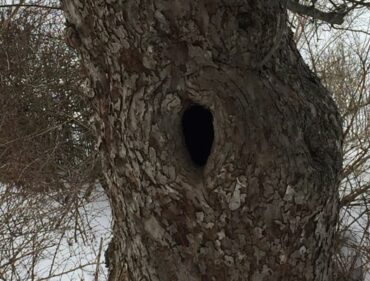Blog: Exploring the Unknown: Dreams
By Isa Gucciardi, Ph.D.
I have been a guest lecturer in the Integral Medicine class at the University of California at Berkeley every year for the last ten years or so. Sometimes I lecture on alternative therapies like Depth Hypnosis, and sometimes on methods of healing that are found in shamanic cultures. During the past few years’ lectures, the students perk up when I have talked about the way dreams are viewed in shamanic cultures. The students are always surprised to hear someone talk about dreams as being an important aspect of their experience.
It always surprises to me to remember that most people do not see their dream life as central to their experience. Most of the cultures that have ever existed on the planet have been shamanic. These cultures have had specialists whose job it was to listen to the unseen powers in the natural world around them and direct those powers into the affairs of the community they served. Shamans were often recognized as healers, ministers, or leaders because of their capacity to dream.
In his book, Dreamways of the Iroquois: Honoring the Secret Wishes of the Soul, Robert Moss discusses the power of dreaming in the Native American traditions of the Iroquois and the Mohawk. In the Mohawk language, the word for shaman or healer is ratetshents, which literally means “dreamer.” In these traditions, dreams reveal the “secret wishes of the soul,” and the task of the shaman in these contexts is to help people recognize what the soul is saying, and then help them to take action to honor their soul’s purpose.
As people have moved away from understanding the importance of dreaming, people have lost contact with the possibility of understanding how their dreams might open doors to greater understanding about the self and its relationship to reality. Modern people who do not live in shamanic cultures are not as skilled at understanding their dreams because they don’t see their dream life as something that is as important as people in shamanic cultures see them. They don’t take time to develop the tools they need to see what their dreams might be revealing.
I always spend time doing dream interpretation during my lectures at the University of California to demonstrate what the students’ dreams might be showing them. Although dreams can often point to new insights and possibilities, they can also point to more difficult aspects of the dreamer’s experience that might need their attention. Many people struggle with issues such as guilt, fear, and anxiety in their dreams. Yet, if people don’t recognize the importance of these dreams, it is not possible for them to understand that the dreams are actually offering them a pathway toward insight and healing.
In dreams, people often encounter the facet of themselves that Carl Jung called “the shadow.” The shadow generally consists of aspects of our experience we would rather not be connected to; so we actively move away from them. Thus, people are often unaware of these aspects of experience and may indeed actively seek to remain unaware. But this is not an effective strategy, because, as Carl Jung cautioned, “Whatever you put in the shadow runs your life.” I recommend Jung’s books Dreams and Memories, Dreams, Reflections, both of which illustrate his approach to dreams.
It’s not always easy to perceive how the things we are in denial about might be running our lives. But, as I always tell the students, if you just start by listening to what your dreams are bringing you, you can begin to perceive how your dreams are reflecting your larger experience. The contents of the shadow come into view, and we can begin to reacquaint ourselves with aspects of our being that we have lost contact with.
When I offer students possible interpretations of what their dreams are pointing to, sometimes I see flickers of concern wash over their faces as they begin to recognize the influence of something they had been trying to ignore or deny. This is all the more true when my lecture turns to an aspect of shamanic healing that involves the ingestion of plants that offer insight about the nature of reality. Dream content usually offers a milder experience of hidden aspects of the self than plants with psychoactive properties offer.
It is challenging to look at certain aspects of our experience, such as strong or seemingly uncontrolled emotion, even without the influence of a psychoactive substance. As the students realize they have a cogent forum to discuss what they cannot or do not understand about their experiences, more questions naturally arise, and dreams can become an entry point for accessing the deeper self.
Editors’ Note: Depth Hypnosis is beneficial for anyone seeking to integrate their experiences in dreams or with psychoactive plants. The techniques of Depth Hypnosis help people touch complex aspects of their experience without being overwhelmed, and offer tools to help people reintegrate that experience into their everyday lives. Although this can seem like a big task, people almost always emerge from the encounter with Depth Hypnosis fuller, happier and more able to remain fully present with the challenges of living the complexity of modern life. Most Depth Hypnosis Practitioners work with people remotely as well as in person. For those interested in exploring their dream life further, Isa Gucciardi offers a Working with Dreams workshop through the Foundation of the Sacred Stream.
ENJOYING THE STREAM OF CONSCIOUSNESS BLOG? SIGN UP FOR FREE UPDATES!



